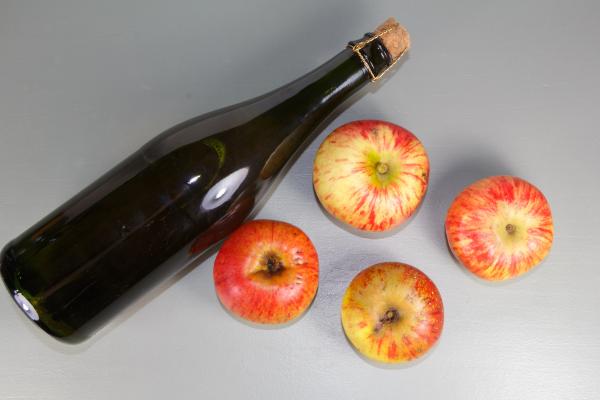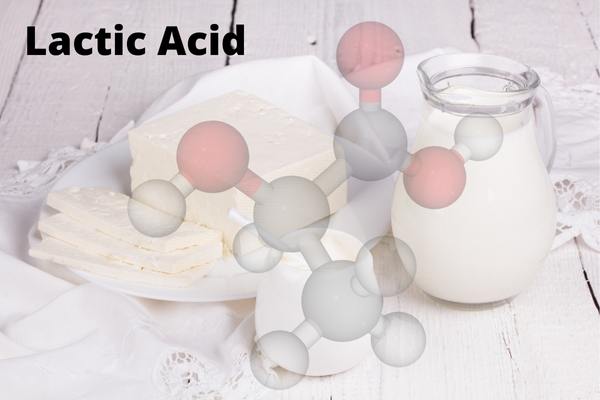As a long-time home brewer and cider aficionado, I’ve had my fair share of challenges. One of the most common issues I’ve faced is how do I stop cider from becoming too acidic?
It can be a tricky problem to tackle, but with the right knowledge, you can produce delicious, well-balanced cider every time.
The key to preventing cider from becoming too acidic lies in understanding the fermentation process, carefully selecting your apples, and monitoring pH levels.
In this blog post, I will share my insights and experiences on these topics, providing you with practical tips you can use in your own cider-making journey.
Understanding the Fermentation Process
First of all, by removing the sugar and turning it into alcohol, you lose the contrast that the sweetness contributes to reducing the perception of acidity. However, more acids are actually also formed during cider fermentation.
The Role of Yeast in Acidification
Fermentation is the process by which yeast consumes sugar and produces alcohol and carbon dioxide. Different strains of yeast can produce varying levels of acidity, so it’s important to choose a strain that is known for creating a balanced cider.

For instance, I’ve had great success with Saccharomyces cerevisiae, a species of yeast that is commonly used in wine and beer brewing.
The Impact of Temperature on Fermentation
Another important factor in fermentation is temperature. Higher temperatures can cause yeast to produce more acid, leading to a sharper, more acidic cider.
I’ve found that maintaining a consistent temperature between 60 to 70 degrees Fahrenheit during fermentation can help maintain a balanced acidity level.
choosing the right apples
The type of apples you use can have a significant impact on the acidity of your cider. Some apples naturally have a higher acidity level, and these can produce a sharper, more acidic cider.

I’ve found that using a mixture of sweet and tart apples can result in a well-balanced cider. Some of the apple varieties I like to use include Golden Delicious, McIntosh, and Fuji.
Monitoring pH Levels
Maintaining the right pH level is crucial in preventing your cider from becoming too acidic. The pH scale measures how acidic or basic a substance is, with lower numbers indicating higher acidity.
Most cider recipes aim for a pH between 3.2 and 3.8. I recommend using a pH meter to regularly test your cider and adjust as necessary.
Adjusting Acidity Levels
Malolactic fermentation
If your cider’s acidity is too high, there are several methods you can employ to effectively adjust and balance it. One commonly utilized technique involves the utilization of malolactic fermentation (MLF).
Malolactic fermentation is a natural biochemical process in which certain bacteria, such as strains of Oenococcus oeni, convert harsh malic acid into milder lactic acid.
This transformation results in a reduction of the overall acidity in the cider, leading to a smoother and more rounded flavor profile.

This approach is particularly useful when aiming to mitigate excessive tartness or sharpness in the cider.
The process of malolactic fermentation requires careful consideration and control. Here’s an outline of the steps involved:
- Testing and Monitoring: Before initiating malolactic fermentation, it’s crucial to measure the initial acidity level of the cider. This serves as a baseline to track the progress of acid reduction.
- Bacterial Inoculation: Select a suitable malolactic bacteria strain, often Oenococcus oeni, that’s well-suited for cider. Inoculate the cider with the bacteria. This can be done by introducing a commercial bacterial culture into the cider or by relying on naturally occurring bacteria if conditions are favorable.
- Temperature Control: Maintain an appropriate temperature range for the bacteria to thrive. Typically, temperatures between 60°F to 75°F (15°C to 24°C) are suitable for malolactic fermentation in cider. Higher temperatures may accelerate the process, but careful control is essential to avoid off-flavors.
- Monitoring Progress: Regularly monitor the progress of malolactic fermentation by measuring acidity levels. This can be done using pH testing or titration methods. As malic acid is converted to lactic acid, you should observe a gradual decrease in overall acidity.
- Flavor Development: Apart from acidity reduction, malolactic fermentation can contribute to flavor development in the cider. Lactic acid, being milder than malic acid, can impart a smoother and creamier mouthfeel to the cider. Additionally, the process might introduce subtle flavor complexities, adding depth to the final product.
- Completion of Fermentation: Once the desired acidity level is achieved, or when the malolactic fermentation is complete, the cider should be racked and potentially aged as desired.
It’s important to note that malolactic fermentation is a controlled process, and its outcomes can be influenced by factors such as temperature, bacterial strain, and cider composition. While it can be a valuable tool in reducing acidity, it’s recommended to conduct small-scale trials before applying the technique to larger batches, as it may also impact the cider’s overall flavor profile.
In cases where malolactic fermentation might not be suitable or desired, other methods like blending with lower-acidity ciders, back-sweetening, or even adding small amounts of alkaline substances like baking soda (sodium bicarbonate) can be considered to achieve the desired balance in acidity and flavor.
Using baking soda
Baking soda neutralizes acids and forms CO2 (that’s what raises the dough…), and you can add it to cider to reduce acidity.
To use baking soda to reduce acidity in cider, follow these steps:
- Measure the cider’s acidity level: Use a pH meter or pH test strips to determine the current acidity level of your cider.
- Add a small amount of baking soda: Gradually add a small pinch of baking soda to the cider. Start with a small amount, as too much baking soda can lead to off-flavors.
- Stir and test: Stir the cider well to ensure the baking soda is evenly distributed. Test the pH again after a few minutes to see if the acidity has reduced to your desired level.
- Repeat if necessary: If the acidity is still higher than you’d like, you can repeat the process by adding a little more baking soda. Be cautious not to overdo it, as too much baking soda can negatively impact the taste.
- Taste and adjust: Keep in mind that altering the acidity can affect the overall flavor of the cider. Taste the cider after adjusting the acidity to ensure it’s still enjoyable.
Remember, adjusting acidity with baking soda should be done carefully and in small increments to avoid changing the flavor profile of the cider too drastically.

If you’re working with a larger batch, consider making a small test batch first to determine the right amount of baking soda for your taste preferences.
Proper Storage
How you store your cider can also affect its acidity. Higher temperatures can increase acidity, while lower temperatures can decrease it. I’ve found that storing cider at a consistent temperature between 40 to 50 degrees Fahrenheit can help maintain the right acidity level.
Conclusion: The Art of Well-Balanced Cider
Crafting a well-balanced cider is truly an art form. It requires a solid understanding of the fermentation process, the ability to choose the right apples, and a careful monitoring of pH levels. But with patience, practice, and a little bit of science, you too can craft a delicious cider with just the right amount of acidity.
Here are some key facts to remember from this post:
1. Different yeast strains can produce varying levels of acidity.
2. Maintaining a consistent fermentation temperature between 60 to 70 degrees Fahrenheit can help balance acidity.
3. Using a mixture of sweet and tart apples can result in a well-balanced cider.
4. Regularly monitor and adjust the pH level of your cider to prevent it from becoming too acidic.
5. Adding a malolactic bacteria can reduce the cider’s overall acidity.
6. Store your cider between 40 to 50 degrees Fahrenheit to maintain the right acidity level.
7. Saccharomyces cerevisiae is a yeast strain that is known for producing a balanced cider.
8. Some apple varieties that are good for cider include Golden Delicious, McIntosh, and Fuji.
9. A pH level between 3.2 and 3.8 is ideal for most ciders.
10. The key to crafting a well-balanced cider lies in understanding the fermentation process, choosing the right apples, and monitoring pH levels.
FAQs
Why is my cider so sour?
There are a few reasons why your cider may be sour. One possibility is that the apples used in the cider were high in acidity, resulting in a tart taste. Additionally, if the fermentation process was not properly controlled, the cider may have developed an excess of acetic acid, leading to sourness. Lastly, certain yeast strains can produce more acidic flavors during fermentation. To balance the acidity, you can try blending the cider with a sweeter batch or adding a sweetener to taste.
How do you make cider taste sweeter?
To make cider taste sweeter, you can try a few different methods. One way is to add sweeteners such as sugar, honey, or maple syrup to the cider. Start with a small amount and gradually increase until you achieve the desired level of sweetness. Another option is to blend the cider with sweeter fruit juices, like apple or pear juice, to enhance the overall sweetness. Additionally, you can ferment the cider for a shorter period of time, leaving more residual sugar in the final product. Experimenting with these techniques will help you find the perfect balance of sweetness in your cider.
How do you fix sour apple cider?
To fix sour apple cider, you can try a few methods. First, you can add a sweetener like sugar or honey to balance the sourness. Start with a small amount and taste, then adjust as needed. Alternatively, you can blend the cider with sweeter apple juice or even a sweeter fruit juice to mellow the sour flavor. Additionally, adding a pinch of cinnamon or nutmeg can enhance the overall taste. Remember to taste and adjust the flavors gradually until you achieve the desired balance.
Why does my apple cider taste sour?
There are a few reasons why your apple cider may taste sour. One possibility is that the apples used in the cider were overly ripe or spoiled, leading to fermentation and the production of acetic acid, which can result in a sour taste. Another reason could be the presence of wild yeast or bacteria during the fermentation process, which can also cause sourness. Lastly, if the cider was not properly stored or pasteurized, it may have undergone additional fermentation in the bottle, leading to a sour flavor.
What does apple cider taste like when it goes bad?
When apple cider goes bad, it typically develops a sour or vinegar-like taste. The flavor may become unpleasant, and the cider might also have a noticeable off smell. It is important to note that consuming spoiled apple cider can lead to foodborne illnesses, so it is best to discard it if you suspect it has gone bad.
How do you fix sour cider?
To fix sour cider, you can try a few methods. One option is to sweeten it by adding sugar or a sweetener like honey or apple juice. Start with small amounts and taste as you go, adjusting to your preference. Another approach is to blend it with a sweeter batch of cider to balance the flavors. Additionally, you can try adding spices like cinnamon or nutmeg to enhance the taste. Remember to experiment in small increments and taste along the way until you achieve the desired flavor.




